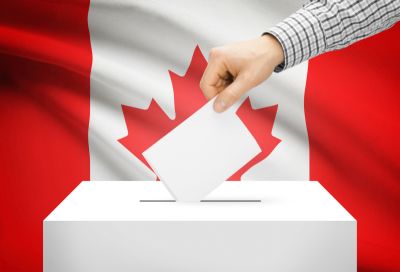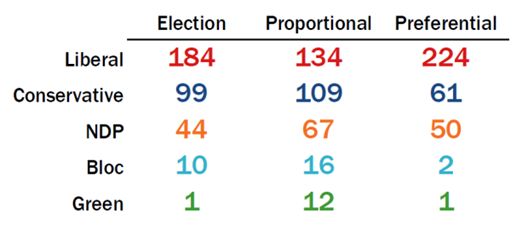Electoral Reform
As part of their election promises the Liberal Party of Canada made the following statement:
“We are committed to ensuring that 2015 will be the last federal election conducted under the first-past-the-post voting system. We will convene an all-party Parliamentary committee to review a wide variety of reforms, such as ranked ballots, proportional representation, mandatory voting, and online voting. This committee will deliver its recommendations to Parliament. Within 18 months of forming government, we will introduce legislation to enact electoral reform.”
Since the election, the Liberal Government has set up a committee to assess the options for a new voting system. It seems the Liberal government is leaning towards a preferential ballot system.
The Opposition has challenged the government on this issue, arguing that the government is using the new electoral system for political gain and are using the power of a majority government to advance what should require a referendum. After all, Canadians have been using a first-past-the-post system since Confederation.
For a bit more clarity on the different types of voting systems, here is a primer:
- First-past-the-post: this is the current voting system in Canada. Voters choose only one candidate to represent their riding as a Member of Parliament (MP), and the candidate with the most votes, without necessarily getting a majority of the votes, represents that riding. The party with the most MPs forms government, and the leader of that party serves as the Prime Minister. The criticism of this system is that a large percentage of the voters in each riding don’t get the MP they voted for, and parties can hold a majority in the House of Commons without getting a majority of the vote. People may feel compelled to vote for a candidate they don’t really want, in order to avoid electing an even worse candidate.
- To be clear, a majority is always 50% or more. Rarely does a candidate achieve 50% of the votes. A breakdown might look like this – Conservative 39% (winner), Liberal 28%, NDP 24%, Independent 9%. Therefore, most of the riding (61%) did not vote for the winner, but due to vote splitting he got the most.
- Preferential Ballot: this is the system that the Liberals are leaning towards introducing. Voters can rank their candidates in order of preference, from 1-4 for example. If no one gets a majority in the riding then the last-place candidate is dropped and the votes are distributed based on second-place votes until one of the candidates gets 50% or more.
- Proportional Representation: this system is quite varied, but typically it takes the percentage of votes a party receives across the country and gives the same proportion of seats to the parties in the House of Commons, who then select the candidates they wish to take seats in the House. It has typically been argued that this would be the best option for conservative-minded Christians to elect members that are pro-life and pro-family. However, the reality is that while there is a chance of electing a few such members with this system, the likelihood of a government being formed by conservative-minded Canadians would diminish substantially as the vast majority of voters are not principled Christians.
Below is a chart showing how the October 19th Election would have turned out under each of the three types of voting systems from CBC:

At this point, it is clear that to change the electoral system in Canada a referendum should be a minimum requirement. A referendum would require the general public to vote in all the provinces and territories on any new system and must get a large majority in order to pass.
Take action:
- Learn more about electoral reform opinions from these articles:
- http://www.cbc.ca/news/politics/monsef-electoral-reform-changes-referendum-1.3428593http://www.cbc.ca/news/politics/monsef-electoral-reform-changes-referendum-1.3428593
- http://news.nationalpost.com/full-comment/andrew-coyne-what-problem-is-electoral-reform-supposed-to-solve-here-are-a-couple-to-start
- http://www.theglobeandmail.com/opinion/who-wants-trudeaus-electoral-reform/article27973254
- Write a letter to your MP about this issue
- Talk to people in your community to raise awareness